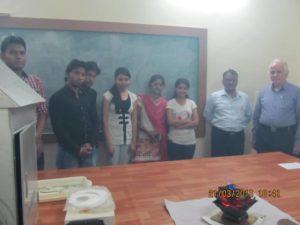Effect of Agnihotra on Air Pollution
Dr. Ulrich Berk

We had a lot of experiments which show that Agnihotra reduces pathogenic particles in the air.
We did a new experiment in March in North Maharashtra University in Jalgaon (one hour away from Tapovan), measuring particulate matter in the air plus SOx and NOx using a High Volume Air Sampler.
See results below.
It was expected that during and right after Agnihotra there would be more particles in the air; any fire produces some smoke.
But next morning all parameters showed reduced values. And this after only one Agnihotra!
Now we want to do further studies:
- Take samples, for example, every hour to see how the reduction is proceeding in time.
- Continue to perform Agnihotra for one week.
- Compare with Control Fire (a fire in which same substances are burnt, but without the disciplines of Agnihotra.)
The director of the Environment Institute of that university was so impressed by this result that he suggests a cooperation for three years with comprehensive research, joint publications, and a conference on the science of Agnihotra!
It seems that now research on Agnihotra and Homa Therapy enters a new phase.
Ambient Air Quality Report
(Values are in µg/m3)
The concentration of an air pollutant (eg. ozone) is given in micrograms (one-millionth of a gram) per cubic meter air or µg/m3.
Sampling Period: – 30 min
| Date | Time | SOx | NOx | RSPM | SPM | |
| 28/03/2016 | 5:15 to 5:45 | Before Homa | 7.9 | 27.3 | 105 | 69 |
| 28/03/2016 | 6:30 to 7:00 | During Homa | 6.2 | 23.7 | 75 | 63 |
| 28/03/2016 | 7:00 to 7:30 | After Homa | 8.3 | 29.1 | 152 | 83 |
| 29/03/2016 | 10:30 to 11:00 | After 15 hrs of Homa | 5.6 | 21.9 | 56 | 47 |
SOx: Sulphur Oxides , Oxides of Nitrogen (NOx)
SPM: Suspended Particulate Matter
RSPM: Respirable Suspended Particulate Matter (particulate matter with diameter of less than or equal to 10 micrometres)
